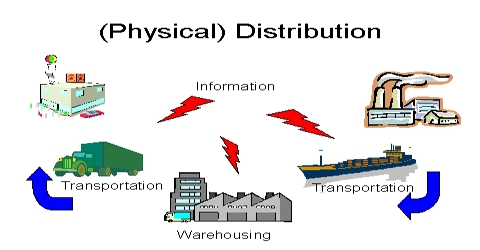Order Processing in Physical Distribution Process:
Order processing is intended to take the consumer orders and execute the particulars the consumer has purchased. In a typical buyer-seller relationship order placement is the first step. Products flow from manufacturers to customers via channel members while orders flow in the reverse direction, from customers to the manufacturers. The physical distribution must be customer-oriented. It starts with customer orders. Rapid order processing enables a company to attain the economy in other areas of physical distribution.
A good physical distribution arrangement should provide for accurate and speedy processing of orders, in the absence of which goods would reach the customers late or in the wrong quantity or specifications. Physical distribution is an important marketing function describing the marketing activities relating to the flow of raw materials from the suppliers to the factory and the movement of finished goods from the end of the production line to the final consumer or user. The business is concerned with this function because it directly relates to how the customer is serviced and attaining customer service goals. If the order processing system is efficient, then the business can avoid other costs in other functions, such as transportation or inventory control. For example, if the handbag business has an error in the processing of a customer order, the business has to turn to premium transportation modes, such as next day air or overnight, to meet the customer service standard set out, which will increase the transportation cost. Marketing agencies such as dealers, merchants, and mercantile agents manage the flow of goods and perform the function of physical supply—right up to the consumer’s homes and stores.
The Order Processing phase begins when the sales order is entered and includes important steps from allocating inventory through warehouse processing. This would result in customer dissatisfaction, with the danger of loss of business and goodwill. Note that order processing affects customer service in two ways – reordering time (interval between two orders) and consistency of delivery time (delivering products within the fixed time).
Order processing mainly includes:
- Receiving order – It involves moving products in and out of a stock. It consists of routine tasks that can be performed through mechanization and standardization. Efficiency is increased through the use of electronic data processing to control conveyor systems, order picking, and other traffic flaws.
- Recording order – Inventory refers to the stock of products a firm has on hand and ready for sale to customers. Inventories are kept to meet market demands promptly. Inventory is the link interconnecting the customer’s orders and the company’s production activity.
- Filing order – Order-processing and inventory control are related to each other. Order processing is considered the key to customer service and satisfaction. It includes receiving, recording, filling, and assembling products for dispatch.
- Executing order or assembling of products for dispatch – The amount of time required from the dates of receipt of order up to the date of dispatch of goods must be reasonable and as short as possible. It comprises undertaking the processes that are needed to make certain orders processed quickly, accurately, and efficiently.
- Transportation – It is an essential element of physical distribution. It involves integrating the advantages of each transportation method by adopting containers and physical handling producers to permit transfers among different types of carriers.
- Credit and collection – Finally credit collection.
















